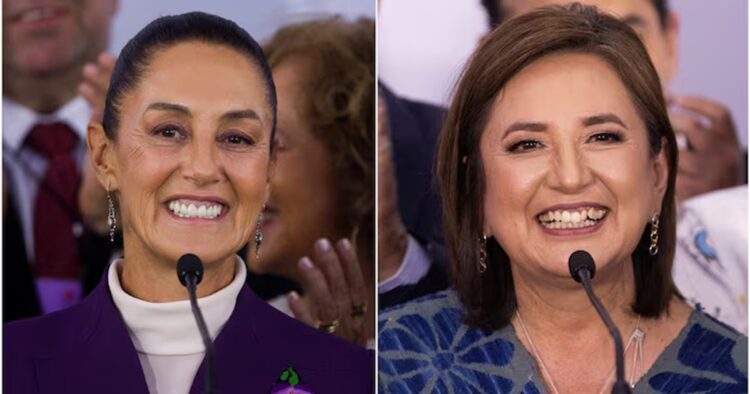Mexico is witnessing a historic moment as it heads to the polls to elect its next president. The choice is between two formidable women candidates, marking the potential for the country’s first female president.
The outgoing president, Andres Manuel Lopez Obrador, has led the country with populist policies but struggled to curb violence from drug cartels, making this election a crucial referendum on his tenure.
Nearly 100 million registered voters are participating in this election, casting their ballots not only for the presidency but also for governors in nine states, members of Congress, and various local positions. Despite concerns over violence, polling stations opened smoothly across the nation at 8 am local time and will close at 6 pm, with preliminary results expected by 9 pm.
Lopez Obrador’s Morena party currently holds a significant portion of political power in Mexico, controlling the majority of governorships and congressional seats. The party aims to secure a two-thirds majority in Congress to enact constitutional amendments, a move opposed by the coalition of opposition parties, who argue it could undermine democratic institutions.
The leading contenders for the presidency are Claudia Sheinbaum of the Morena party and Xochitl Galvez of the opposition coalition. Sheinbaum, currently the Mayor of Mexico City, pledges to continue Lopez Obrador’s policies, including social programs and youth initiatives. Galvez, a former senator and tech entrepreneur, promises a tougher stance against drug cartels, advocating for a shift from the incumbent’s “hugs not bullets” approach.
The election highlights pressing issues such as cartel violence and economic growth. Despite a strengthening peso and remittance inflows, Mexico’s GDP growth remains modest under Lopez Obrador’s leadership. His claims of reducing homicide rates are disputed, reflecting the challenge of tackling crime effectively.
While Mexicans abroad have the opportunity to vote, turnout among this demographic has historically been low.
Overall voter turnout typically hovers around 60%, contrasting with higher participation rates in recent US presidential elections. The deep divisions in Mexican society over security and economic policies echo similar divides seen in the United States.
Beyond the presidency, attention is also drawn to key governorship races, particularly in populous states like Veracruz and Jalisco. The outcome of these elections will shape the country’s political landscape for years to come, influencing policies at both the national and local levels.
As Mexico awaits the results, the significance of this election as a milestone in its democratic journey cannot be overstated.

















Comments